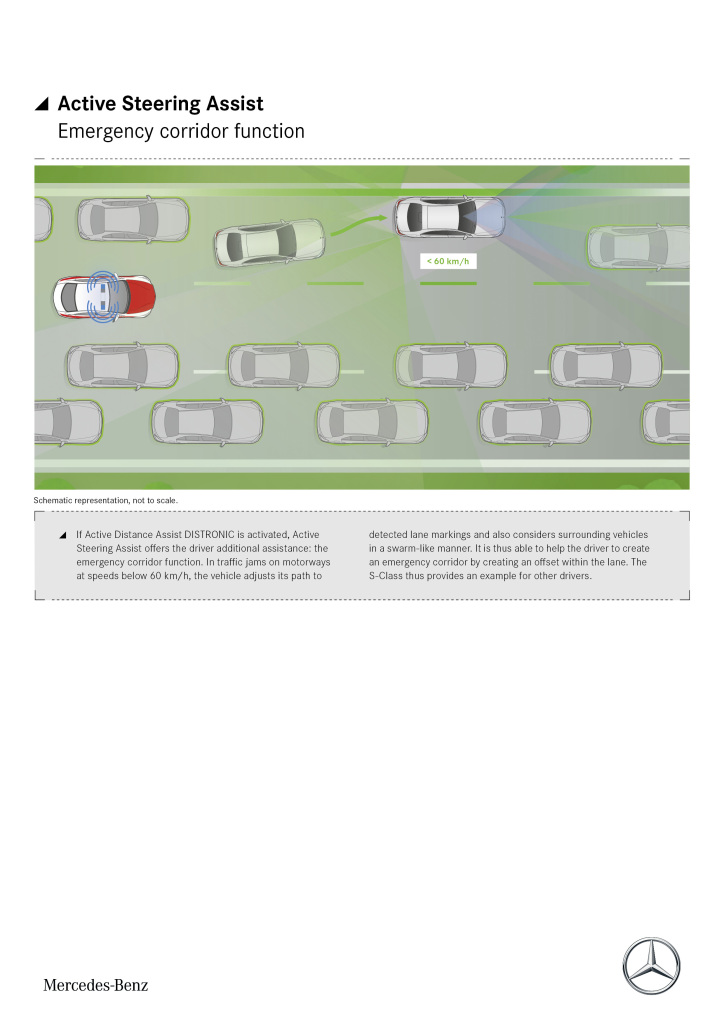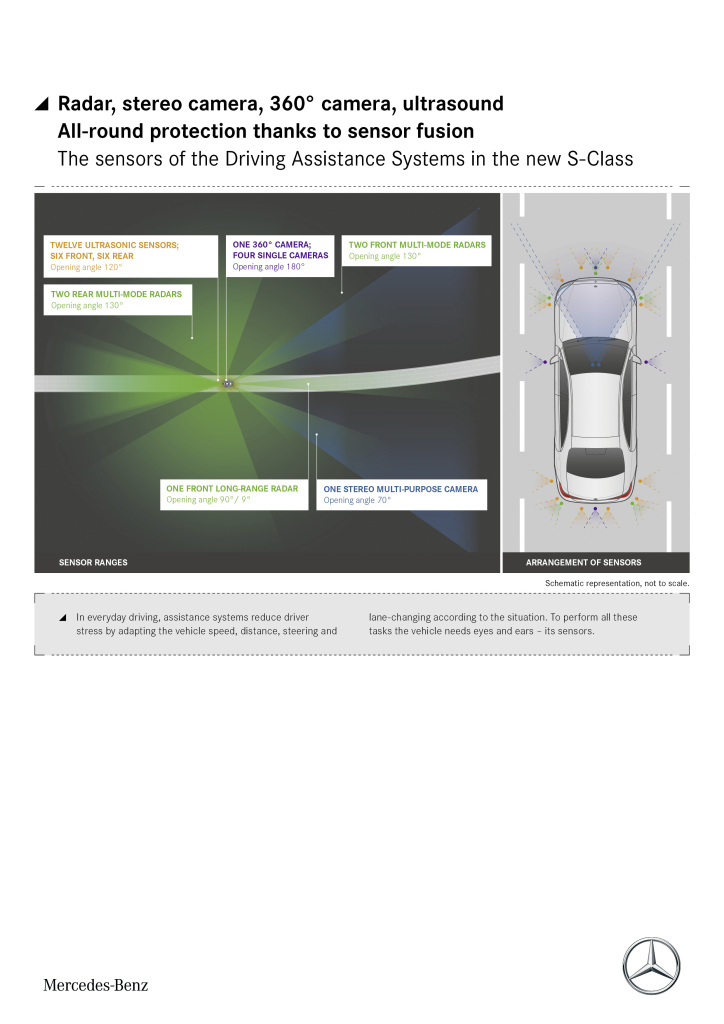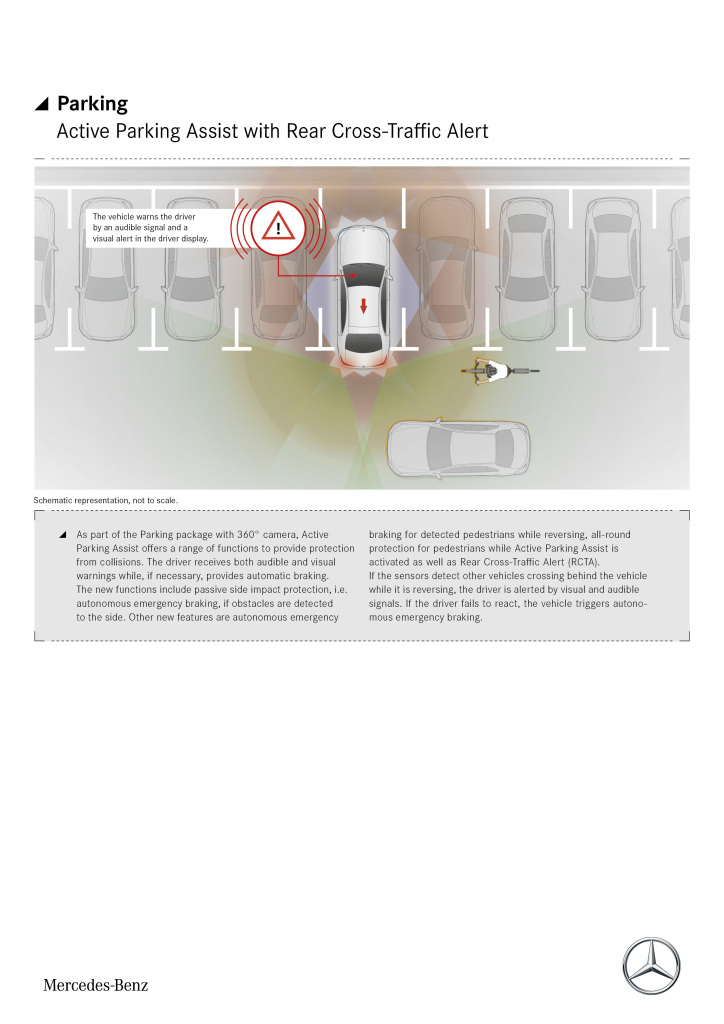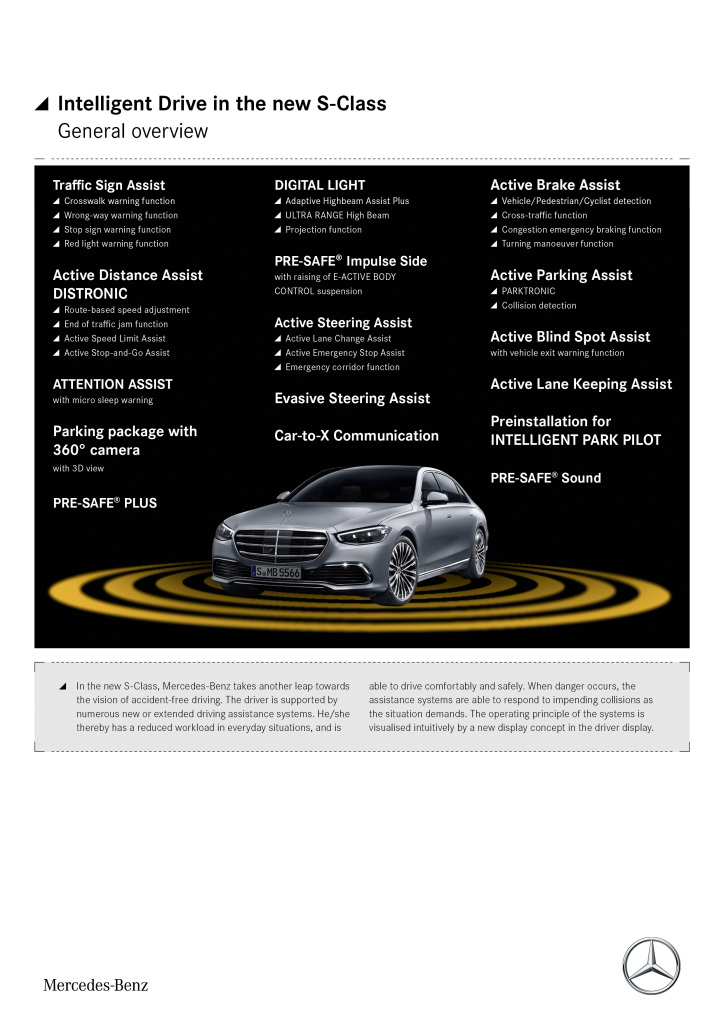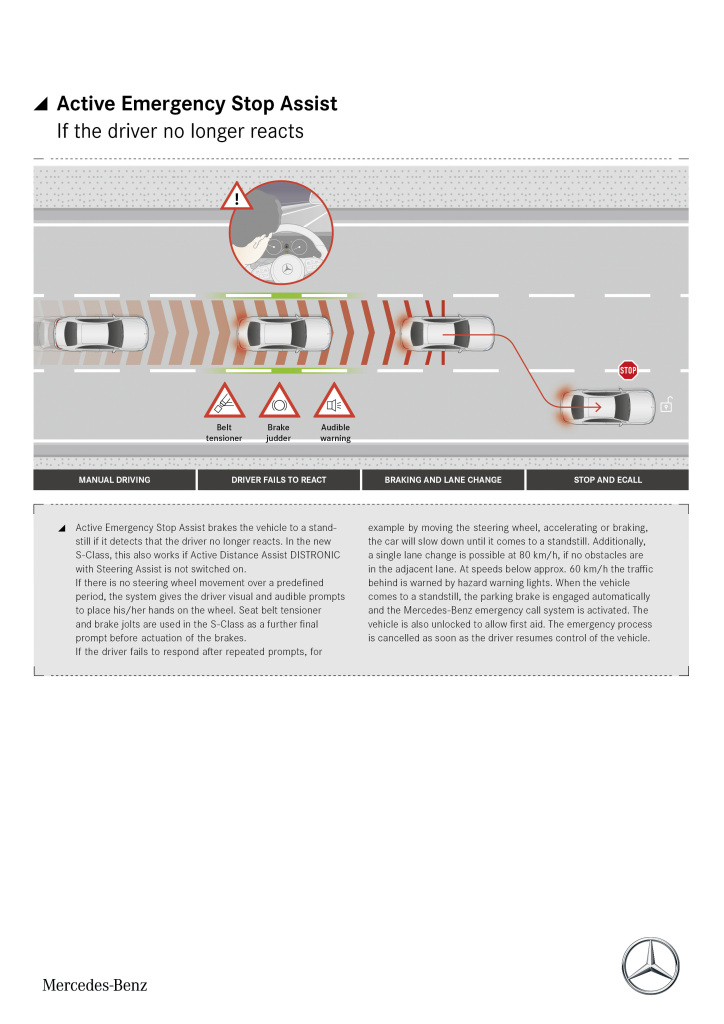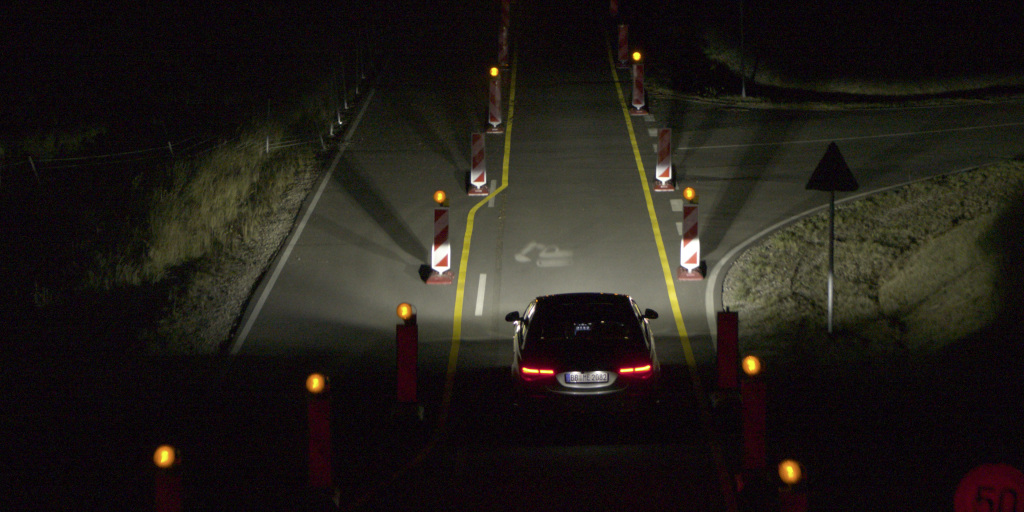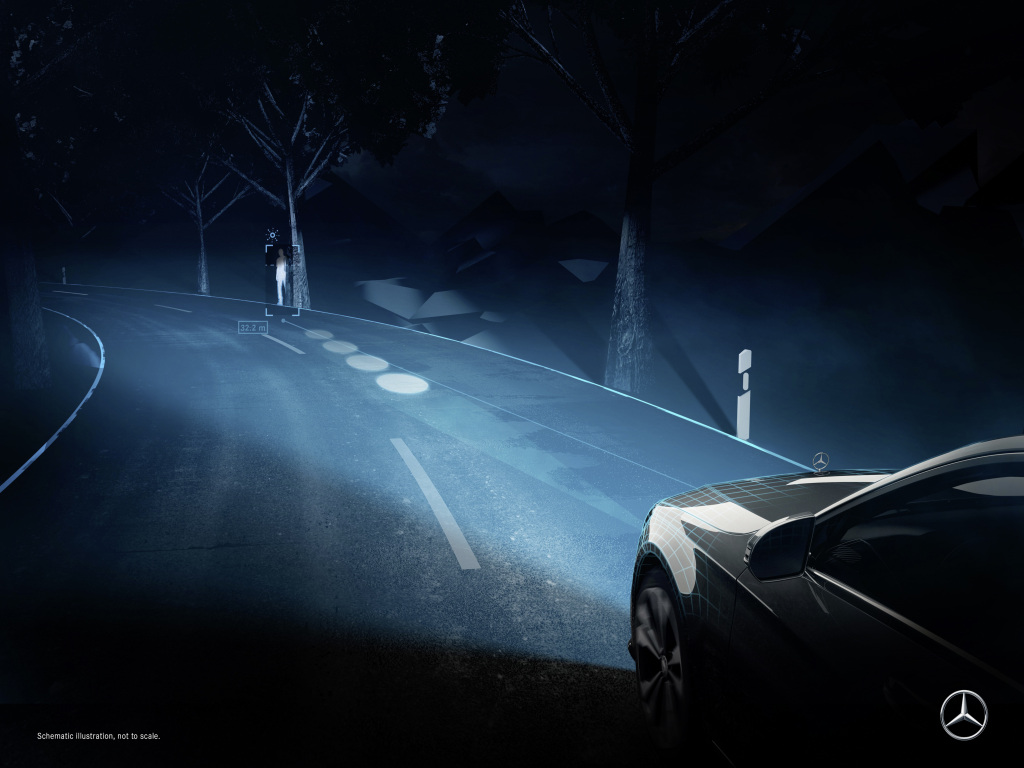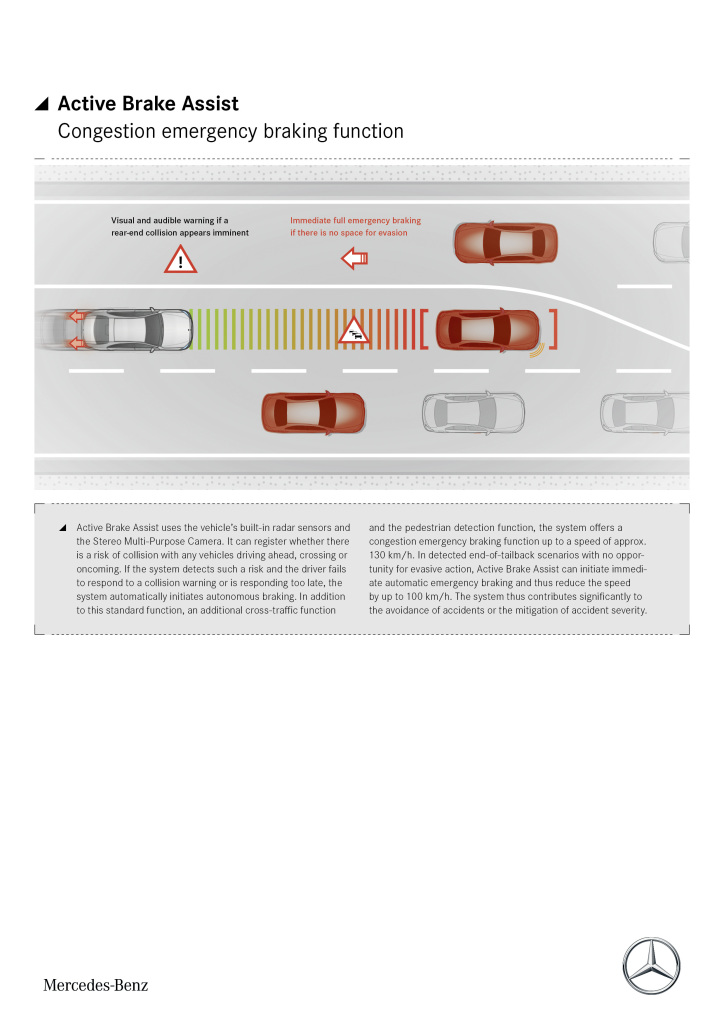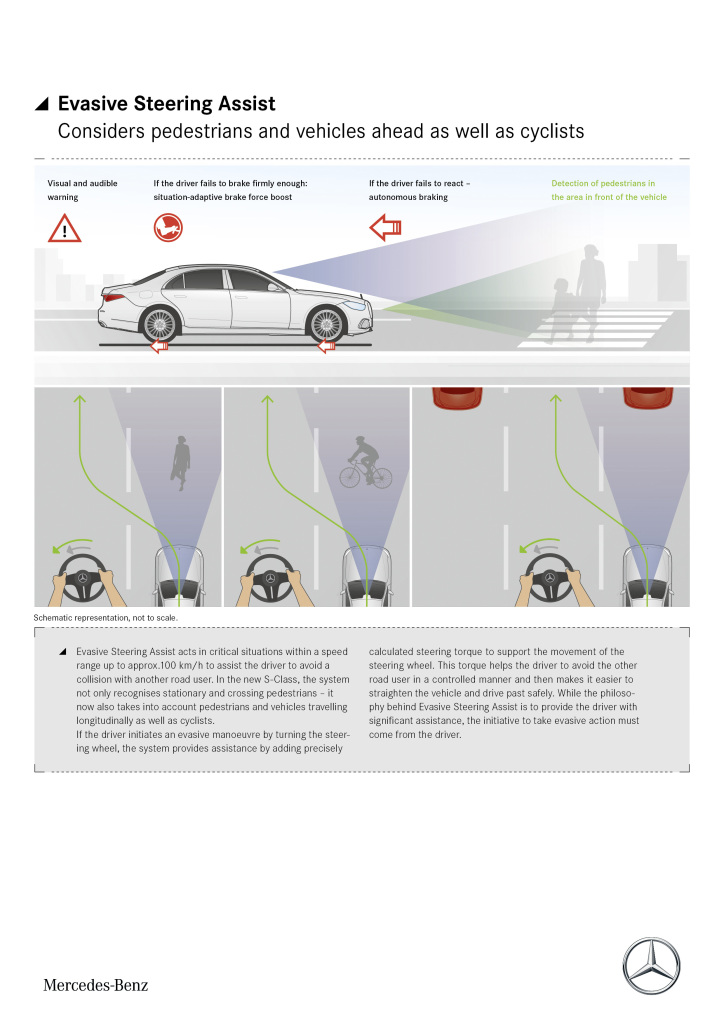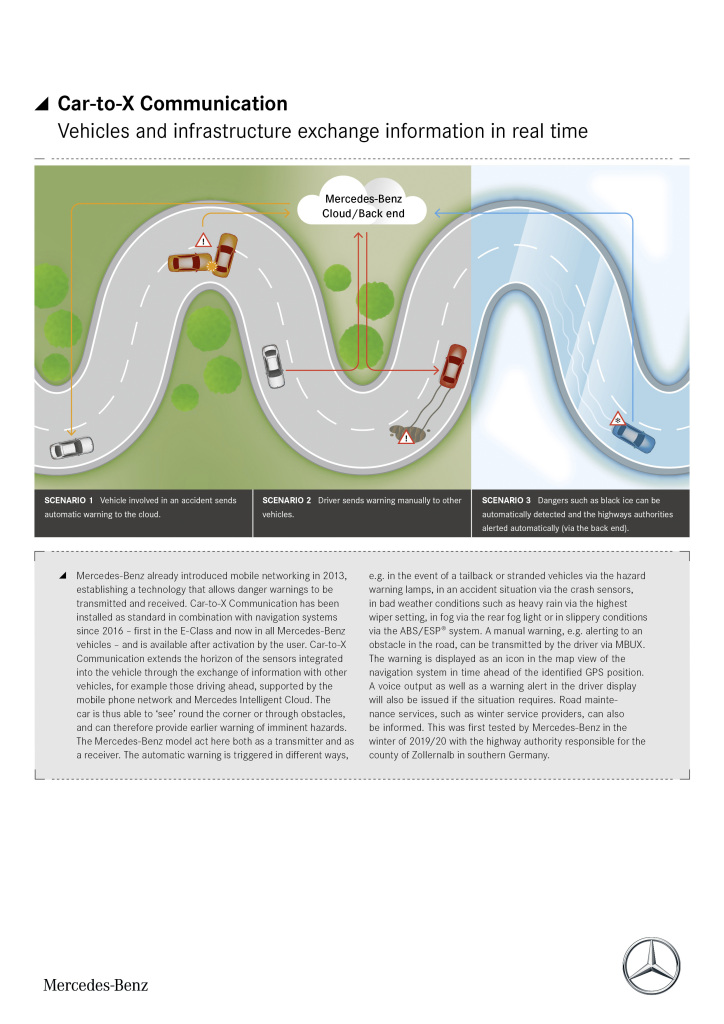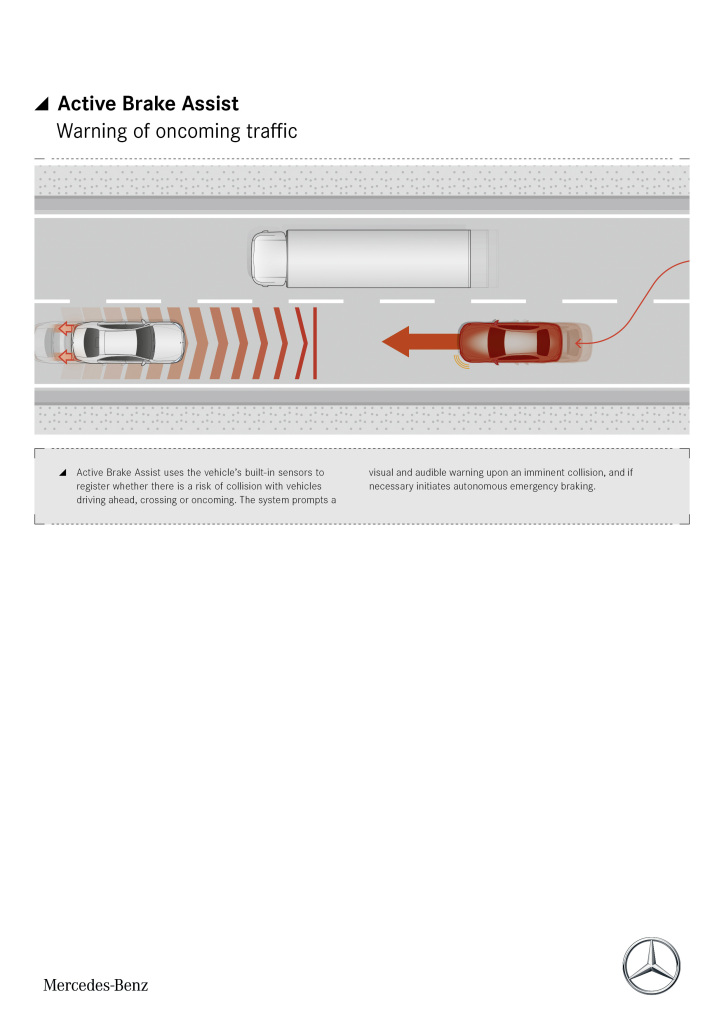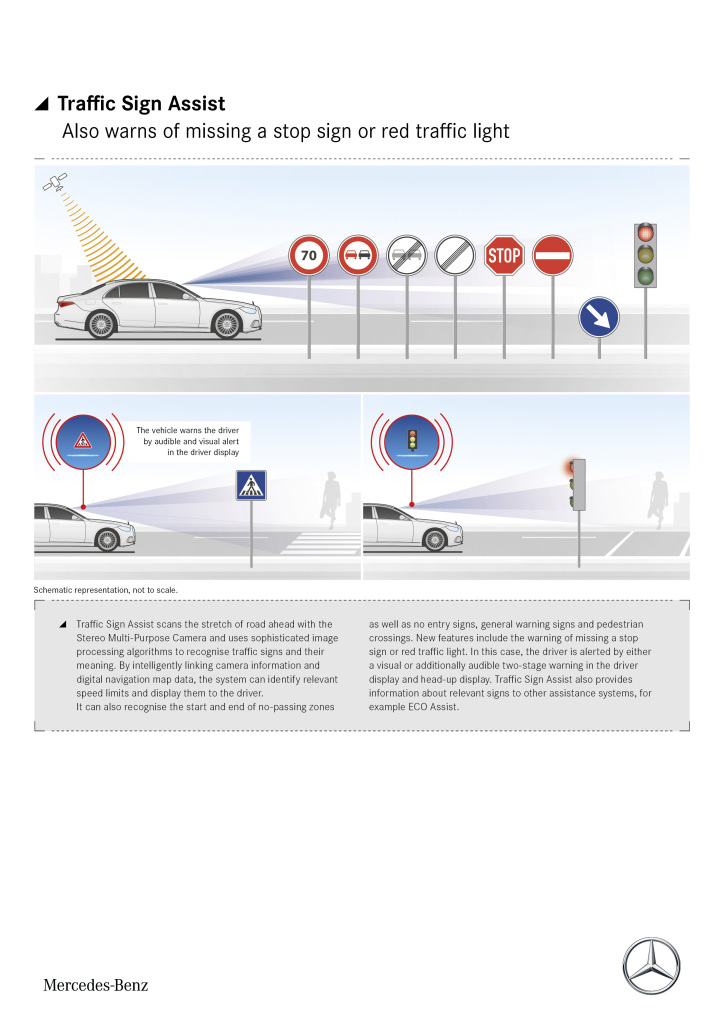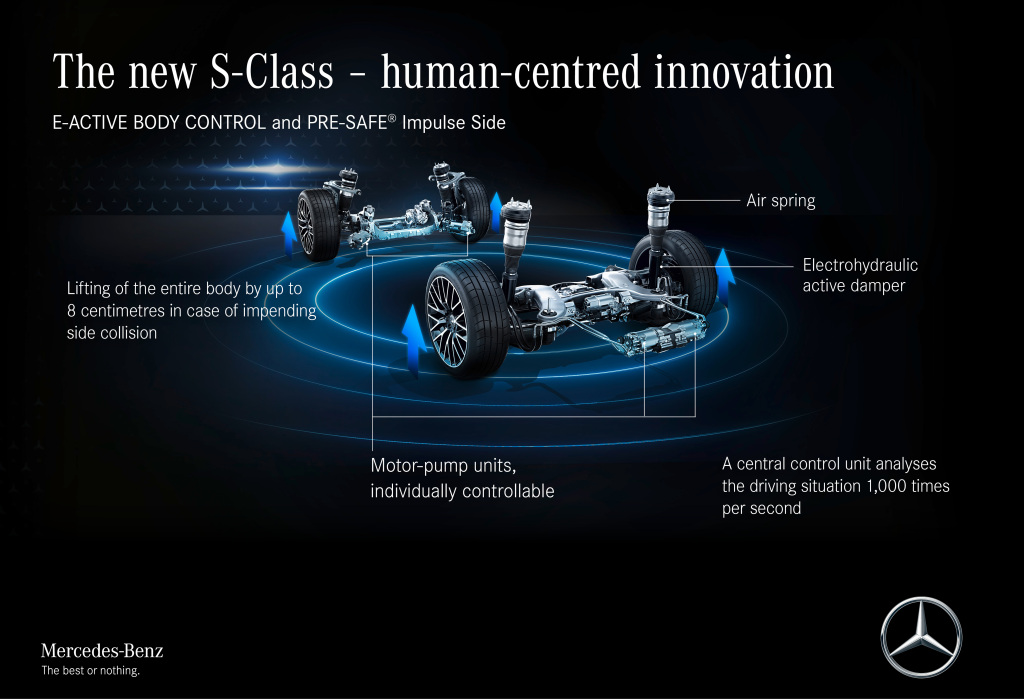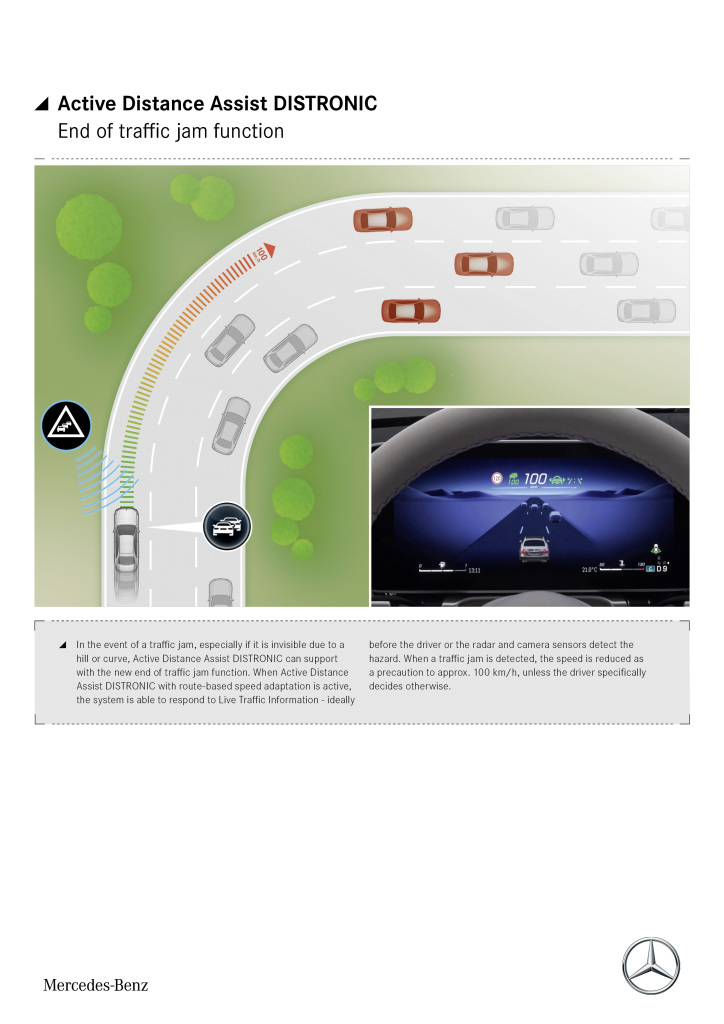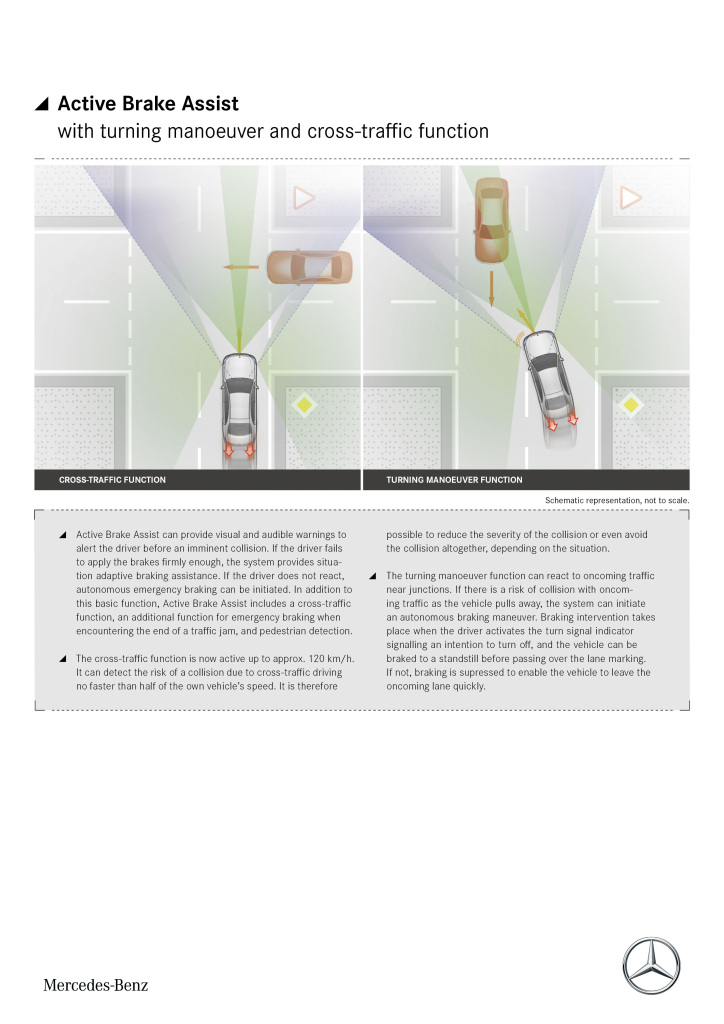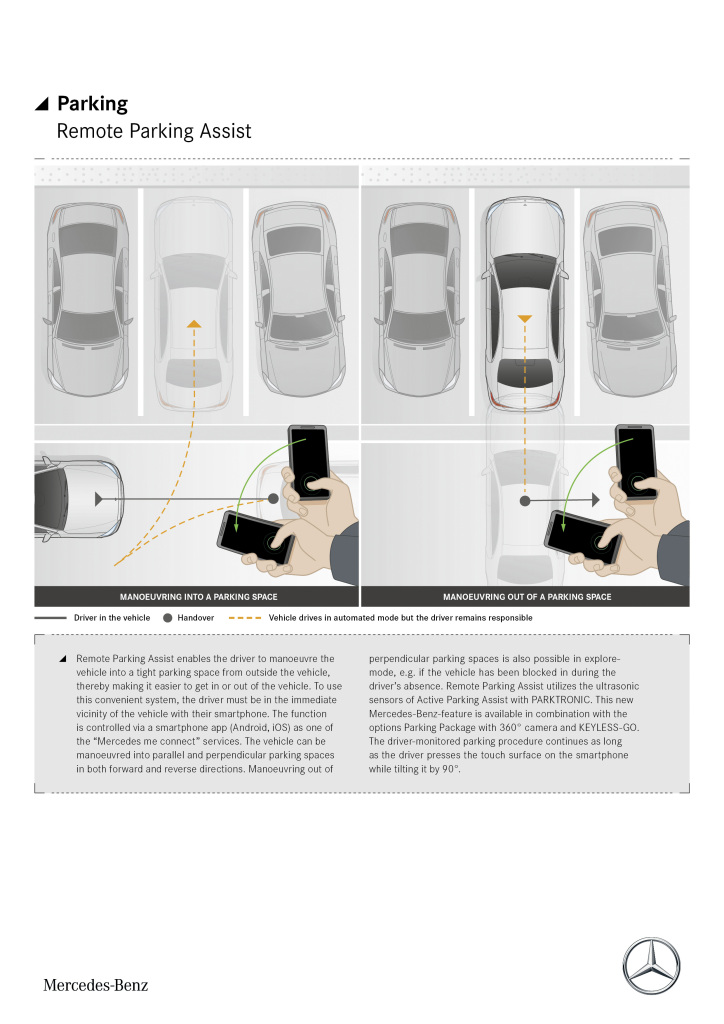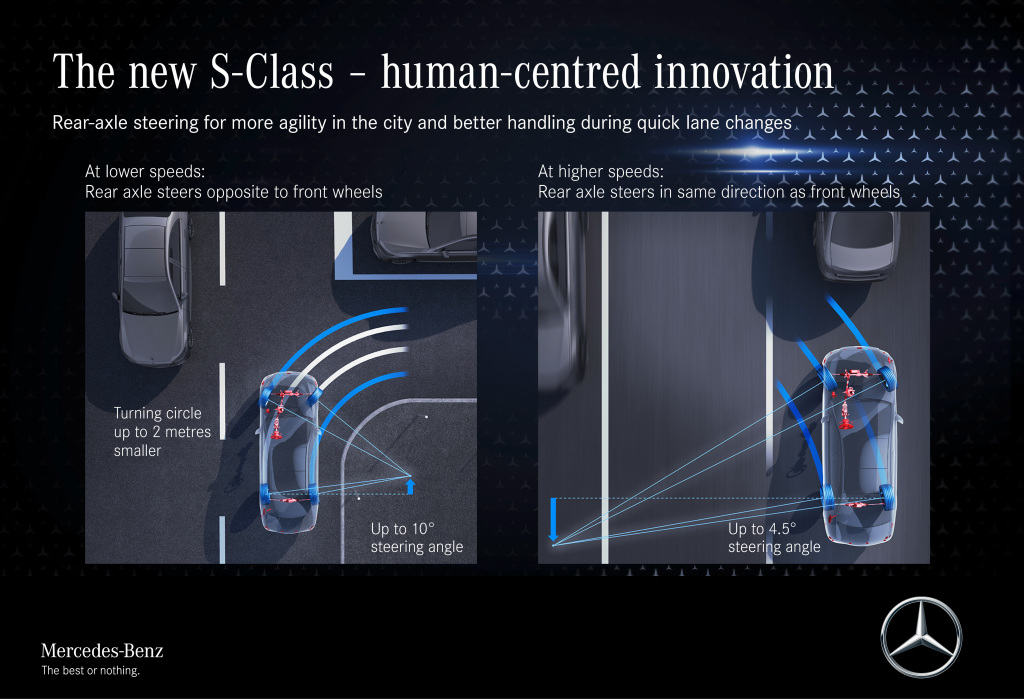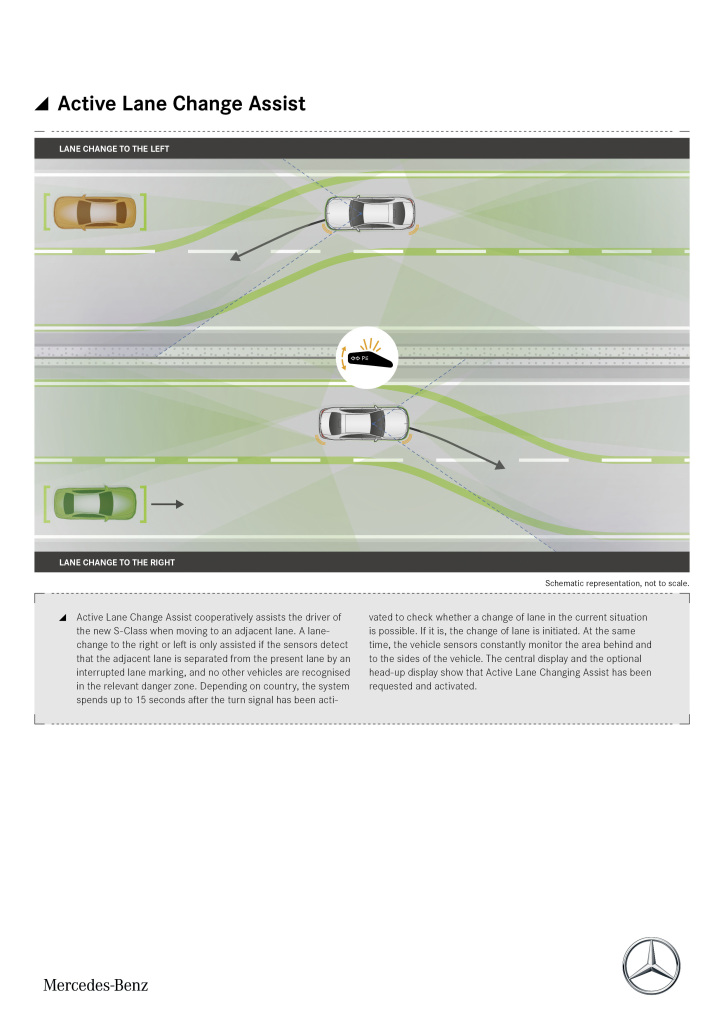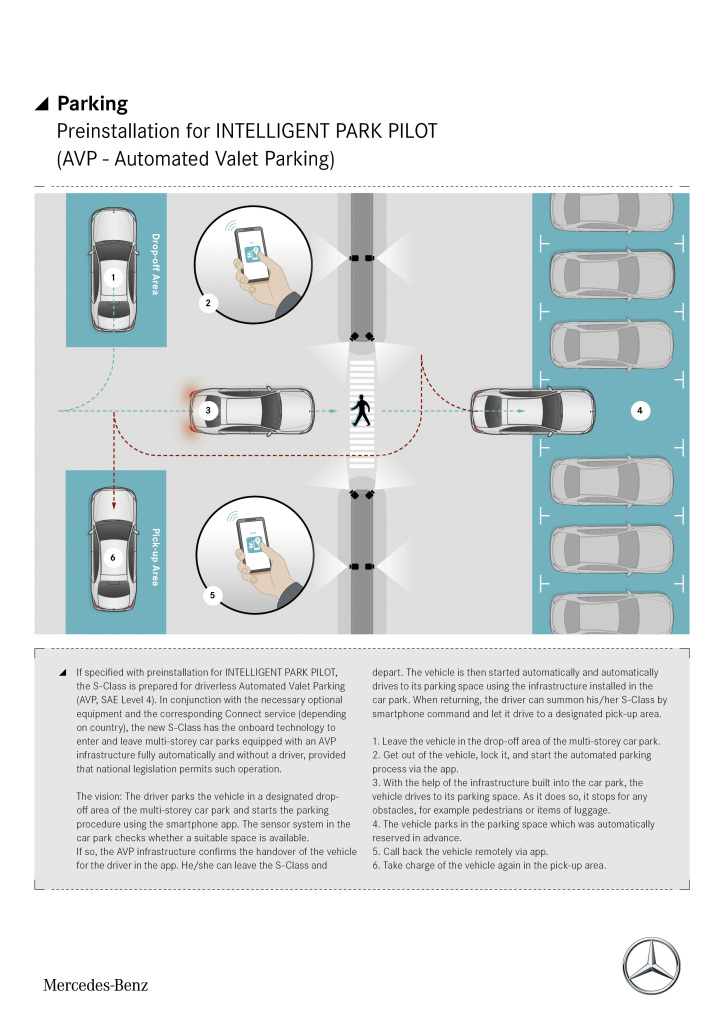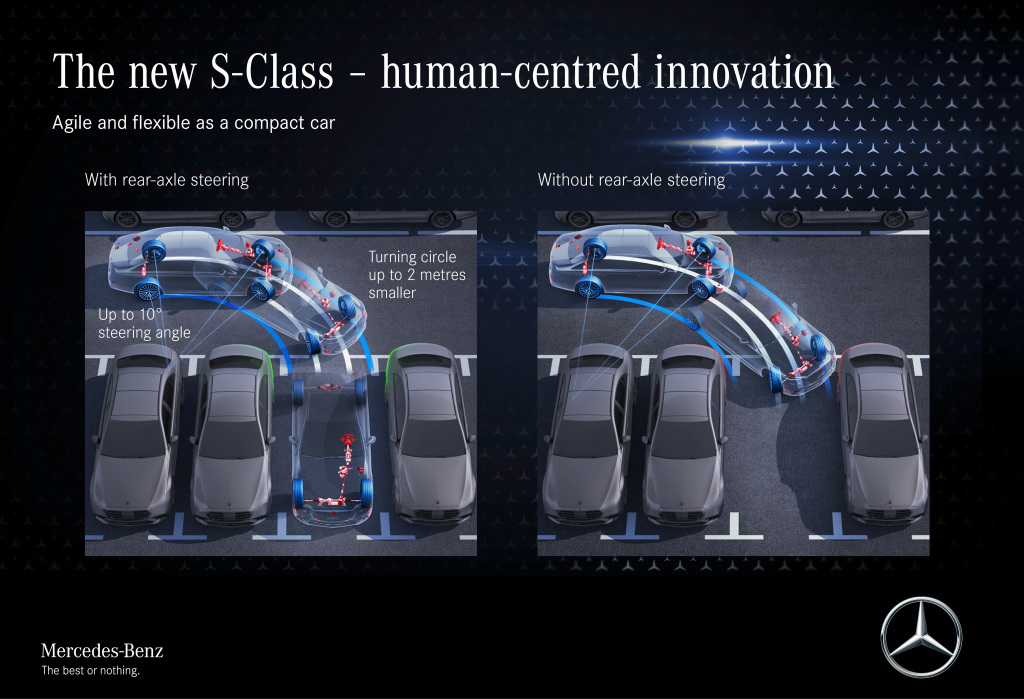Intelligent bodyshell design and innovations in restraint systems confirm the leading role of the S-Class when it comes to passive safety. The new aluminium hybrid bodyshell with an aluminium content exceeding 50 percent meets numerous requirements: A high level of crash safety, up to 60 kg less weight and a highly rigid bodyshell ensure outstanding handling characteristics accompanied by excellent noise and vibration comfort.

Mercedes-Benz S-Class DIGITAL LIGHT
The bodyshell of the new S-Class was designed with a particular focus on lightweight construction. The newly developed aluminium/steel hybrid bodyshell increases the aluminium content to more than 50 percent by weight. The high proportion of aluminium is achieved by using cast and extruded structural components. This form of lightweight design and construction requires highly complex joining techniques. It demonstrates the know-how of Mercedes-Benz in the luxury saloon segment, as well as the quality arising from close, barely perceptible body joints and the highly precise fit of the design surfaces.
The extensive package of lightweight construction measures includes rigid extruded aluminium sections for the side members in the front, rear and sides. Specially developed, highly integrated diecast aluminium components are used at important nodal points in the structure.
The extremely stable side wall structure comprises the pillars, the side roof frame and the side members. The material mix of aluminium and high-strength steel alloys helps to reconcile the conflicting aims of lightweight design and crash resistance. The inner shells are partly made up of several components, with particularly large areas for the nodal points between the pillars, roof frame and side members according to the potential loads.
One-piece aluminium side wall panels are a highly effective lightweight construction feature. Particular importance was given to achieving close joints and high-quality radiuses. The body panels of the roof, bonnet, wings, boot lid and doors are also of sheet aluminium.
Passenger cell: protected by ultra high-strength and press-hardened steel
The Mercedes-Benz safety cell is the centrepiece of the safety system. It has a structure of hot-formed high-strength steel cross-members in the areas of the firewall and rear end. At the sides this is complemented with extremely rigid side sills of extruded aluminium sections, which are larger than in the preceding model, with four internal chambers.
The floor structure likewise has ultra high-strength and press-hardened steel alloys combined to form a highly functional platform. The loads arising in all impact scenarios are conducted into the main floor. The robust centre tunnel and the lateral side members provide the basis for this. These assemblies are connected using further cross-members and diagonal struts. The design of this support structure makes the use of lighter floor panels possible. These make a major contribution to weight efficiency. The load resistance of the tunnel, which is especially important for frontal impacts, is achieved using connected sections of high-strength steel. The wall thicknesses vary according to expected loads.
Front: Protection of other road users
The front structure consists of an annular upper structure, the side members and the integral carrier. Additional polymer connecting elements between the crash levels ensure particularly effective energy absorption in the early phase of a crash. The integral carrier supports the engine, steering and lower suspension arms, and uses a special crash support system to direct longitudinal forces into the floor structure during a frontal collision. In the case of semi-overlapping collisions, the cross-connections in the front section are able to activate the side unaffected by the impact, e.g. the right side of the structure in case of a semi-overlapping collision on the left, and vice versa.
In cases of heavier deformation, the wheels are supported against the rigid side wall and the wheel impact element positioned ahead of it. The geometry and strength of the side sills are configured accordingly. Above the pedal floor panel the firewall is reinforced by an exterior cross-member of high-strength steel, which is supported by the A-pillars.
As well as occupant protection, compatibility with other road users was an important development objective. For this purpose, as an addition to the previous concept, the front flexural member is designed to provide an even more stable and broad impact surface for the other vehicle in an accident, for example.
Rear section: two zones with different purposes
The safety level of the rear structure is mainly achieved by a division into two crash zones. The zone housing the fuel tank components is kept almost deformation-free by cast aluminium sections. The purpose of the crumple zone behind this is mainly to dissipate impact energy with the help of extruded aluminium structures. In the case of a semi-overlapping collision, the rear flexural member directs the loads into the side unaffected by the impact, so that both side member paths can be activated.
Restraint systems: innovations for passengers in the rear
Especially in the S-Class, particular attention has always been paid to safety in the rear. In this respect, Mercedes-Benz has long devoted itself to extending the airbag and belt systems. Large windowbags cover the side windows like a curtain. These can be triggered according to the type of impact, e.g. a severe lateral collision or a rollover. The outer seat belts are equipped with belt tensioners and belt force limiters as standard, helping to reduce the loads acting on the occupants. Rear sidebags are optionally available, as is the beltbag: as an inflatable belt strap it distributes the loads acting on the upper body over a wider area.
The rear airbag is an innovation by Mercedes-Benz: this additional airbag can further improve the safely level of passengers in the rear during a severe frontal collision (see “Under the microscope”). However it still remains important for the occupants to wear seat belts. In the rear this is made more intuitive by the optional, illuminated designer belt buckles.
New protective features for a severe lateral impact are introduced with the new S-Class. A suspension-based function has been added to the innovative PRE-SAFE® Impulse Side: when a side impact threatens, the vehicle body can be raised by the E-ACTIVE BODY CONTROL suspension (optional) within a few tenths of a second.
PRE-SAFE® Impulse Side, an innovation in the Experimental Safety Vehicle ESF 2009, had its world production premiere in 2015. The idea: to make use of the time before the impact, the system moves the occupant away from the door panel and towards the centre of the vehicle just before an impending side collision. To do this, the system inflates the air chambers in the side bolsters of the backrest within a fraction of a second when an imminent side impact is detected. This impulse not only moves the occupant away from the danger zone, increasing the distance from the door, as the impulse is also moderately transferred to the occupant. It mitigates the forces acting on him/her during a lateral impact. This can substantially lessen the load exerted on the ribcage by the side collision, and greatly reduce the risk of injury.
Mercedes-Benz has now added a new function of PRE-SAFE® Impulse Side to its measures in the pre-accident phase: when a side impact threatens, the vehicle body can be raised by the E-ACTIVE BODY CONTROL suspension (optional) within a few tenths of a second. Radar sensors are used to recognise a potential side crash. The actuator is the E-ACTIVE BODY CONTROL suspension, which can raise the body upwards by up to 80 millimetres. This reduces the loads on the door structures, as the door sill can absorb more of the energy thanks to its higher position. As a result, deformation of the passenger cell and the loads acting on the occupants can be reduced.
During a severe side impact, the new centre airbag positions itself between the driver and front passenger seat, reducing the risk of their heads making contact It is integrated into the driver’s seatback in the middle of the vehicle.
The centre airbag is triggered when a severe side collision is recognised and certain conditions are met. The main factors for deployment are the direction of impact, impact side, and front passenger seat occupancy.
